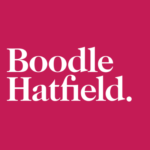Continue reading "Trustees: A momentous decision"
Trustees: A momentous decision

The claimants were the present trustees of the Savernake Estate, the principal asset of which was a grade I listed house known as Tottenham House together with a dilapidated grade II listed stable block (together Tottenham House). Unoccupied since the 1990s and decaying fast, it was proposed to sell Tottenham House not least because of the need to repay significant borrowing from the bank. There was no dispute as to the trustees’ decision to sell; what was disputed was the process by which that sale should be achieved. The beneficiaries of the trust were the first defendant (Lord C...

Continue reading "Trustees: A momentous decision"

Continue reading "Trustees: Island exposure"
The judgment concerned the costs of an application by the administratrix of the aforesaid estate (the Maitland Estate) pursuant to CPR, Part 64.2(a). Apart from two charities, there were six beneficiaries of the residuary estate under the will of the deceased. The first defendant, a beneficiary and formerly an executor, was the only of the defendants to oppose the application. The parties’ overall legal costs incurred up to and including the hearing were over £900,000, a staggering figure for an application of this kind, especially where the aspect of the estate in issue was worth ...

Continue reading "Trustees: Duty to act reasonably"
Eric Lionel Thomas (the settlor) settled a trust (the 1961 settlement) by deed dated 27 June 1961 (the 1961 deed). The principal asset of the 1961 settlement was a controlling interest in NWN Media (the company), a family owned newspaper publishing company that published local newspapers in Wales, Chester, Shropshire and Herefordshire. The trustees of the 1961 settlement (the trustees) were given powers by the 1961 deed to sell shares with the consent of the settlor during his lifetime and thereafter at their discretion. In addition, the 1961 deed gave the trustees the powers of appropri...
Mrs Elizabeth Longman (D) died on 18 April 2008, leaving the residue of her estate equally to six charities if they were in existence at the date of her death. One of the six was the International Bible Society (UK) (IBS). When the will was made, IBS was an unincorporated association, but it had incorporated in May 2007 by transferring all its assets to a new charitable company, IBS-STL Ltd. Clause 6.3 of D’s will (see para [2] of the judgment below) provided that if one or more of the named charities merged or ceased to exist her trustees could pay its share of the residue to a...